The rich and diverse cultural tapestry of India is often reflected in the vibrant attire and intricate jewelry worn by its people. Indian women, in particular, are known for adorning themselves with an array of jewelry pieces that vary from region to region. This tradition goes beyond mere ornamentation; it is deeply rooted in cultural, social, and religious significance. Let's explore the multifaceted reasons why Indian women wear so much jewelry.
The tradition of Indian women wearing extensive jewelry goes far beyond the aesthetic appeal; it is a tapestry woven with cultural, social, and religious threads. Each piece of jewelry tells a story, symbolizing heritage, prosperity, identity, and the sacred bonds that connect generations. Understanding the deep-rooted significance of this tradition adds layers of appreciation for the diverse and intricate world of Indian jewelry.
Cultural Heritage
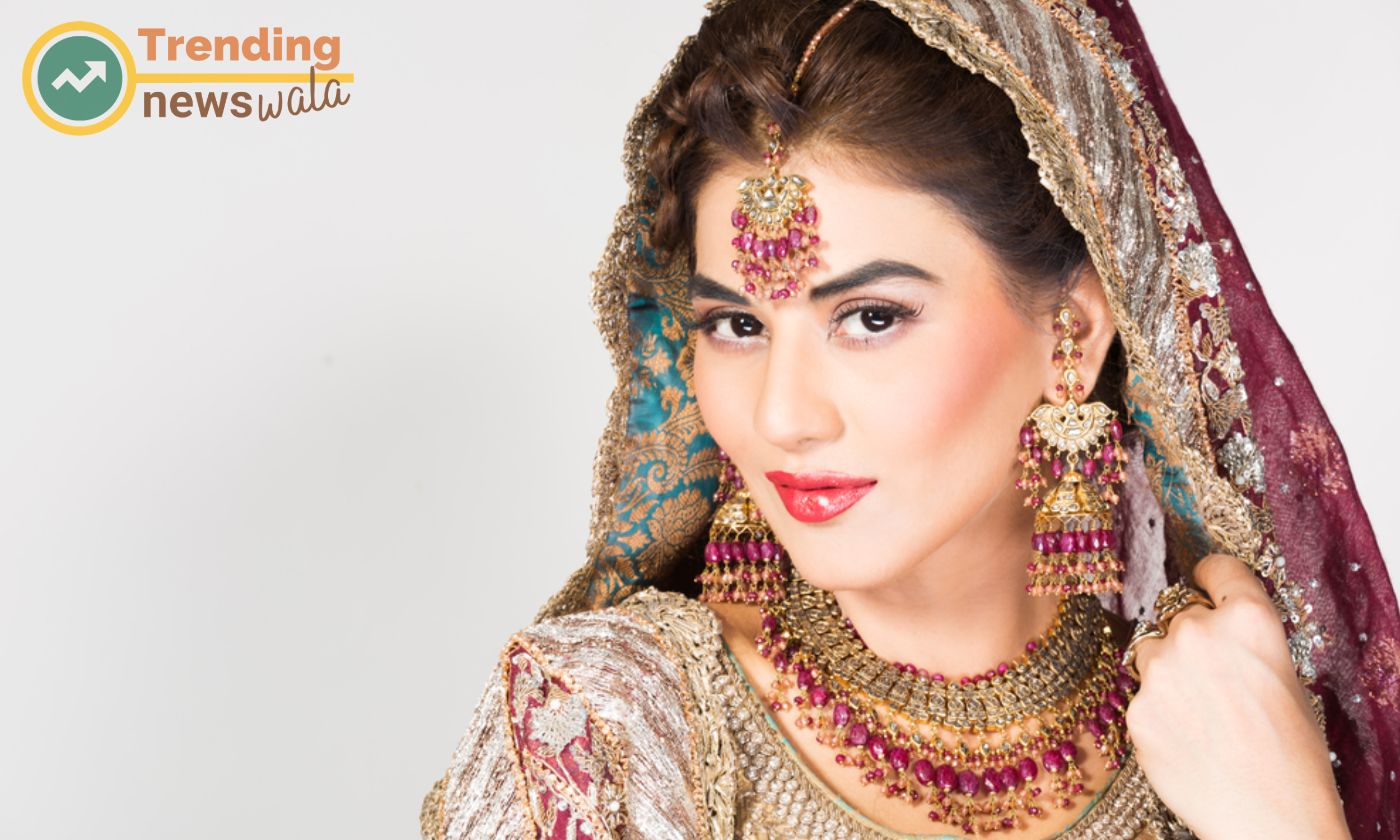
Jewelry in India is more than just an accessory; it is a tangible representation of the country's cultural heritage. Each region boasts its unique styles and designs, passed down through generations, contributing to the diversity and richness of Indian jewelry.
Cultural heritage encompasses the shared traditions, customs, values, beliefs, arts, and artifacts that define a particular group or community. It is a reflection of the collective identity and history of a society, passed down through generations. Here are more details on cultural heritage:
Tangible and Intangible Components: Cultural heritage consists of both tangible and intangible elements. Tangible components include physical artifacts such as buildings, monuments, art, and artifacts. Intangible elements encompass traditions, languages, rituals, folklore, music, and oral histories.
Historical Significance: Cultural heritage holds historical significance, providing insights into the development and evolution of a community or civilization. It preserves the collective memory of a people and helps transmit knowledge about their past to future generations.
Identity and Belonging: Cultural heritage plays a crucial role in shaping the identity of individuals and communities. It provides a sense of belonging and connects people to their roots, fostering a shared understanding of who they are and where they come from.
Preservation of Traditions: Through cultural heritage, traditions and customs are preserved and passed down from one generation to the next. This continuity ensures that valuable practices, rituals, and ways of life are not lost over time.
Diversity and Multiculturalism: Cultural heritage contributes to the diversity of human societies. It highlights the unique characteristics of different groups, fostering an appreciation for multiculturalism and promoting understanding among communities with distinct cultural backgrounds.
Cultural Expression: Art, literature, music, dance, and other forms of cultural expression are integral components of cultural heritage. These forms of expression not only reflect the creativity of a society but also serve as mediums through which cultural values and stories are communicated.
Sense of Pride: Cultural heritage instills a sense of pride and belonging among individuals. It encourages people to take pride in their cultural roots and actively participate in the preservation and promotion of their heritage.
Tourism and Cultural Diplomacy: Cultural heritage often attracts tourists and serves as a platform for cultural diplomacy. Historic sites, museums, and cultural events become avenues for sharing and exchanging cultural experiences on a global scale.
Challenges of Preservation: Preservation of cultural heritage faces challenges such as natural disasters, urbanization, pollution, and conflicts. Efforts are made globally to protect and conserve these valuable assets through initiatives by governments, organizations, and communities.
Global Heritage: Some aspects of cultural heritage are recognized as part of humanity's shared global heritage. UNESCO's World Heritage Sites, for example, represent cultural and natural properties considered of outstanding value to humanity.
Evolution and Adaptation: Cultural heritage is not static; it evolves and adapts to changing circumstances. While preserving traditions, communities also find ways to integrate new elements into their cultural fabric, ensuring relevance in contemporary contexts.
Education and Awareness: Cultural heritage education and awareness initiatives are essential for fostering an understanding of the importance of preserving and celebrating cultural diversity. Education promotes a sense of responsibility towards safeguarding these valuable aspects of human civilization.
Understanding and appreciating cultural heritage contribute to the enrichment of societies, fostering a sense of unity, respect, and shared humanity. It is a dynamic and evolving aspect of human existence that continues to shape the diverse tapestry of global cultures.
Symbol of Prosperity
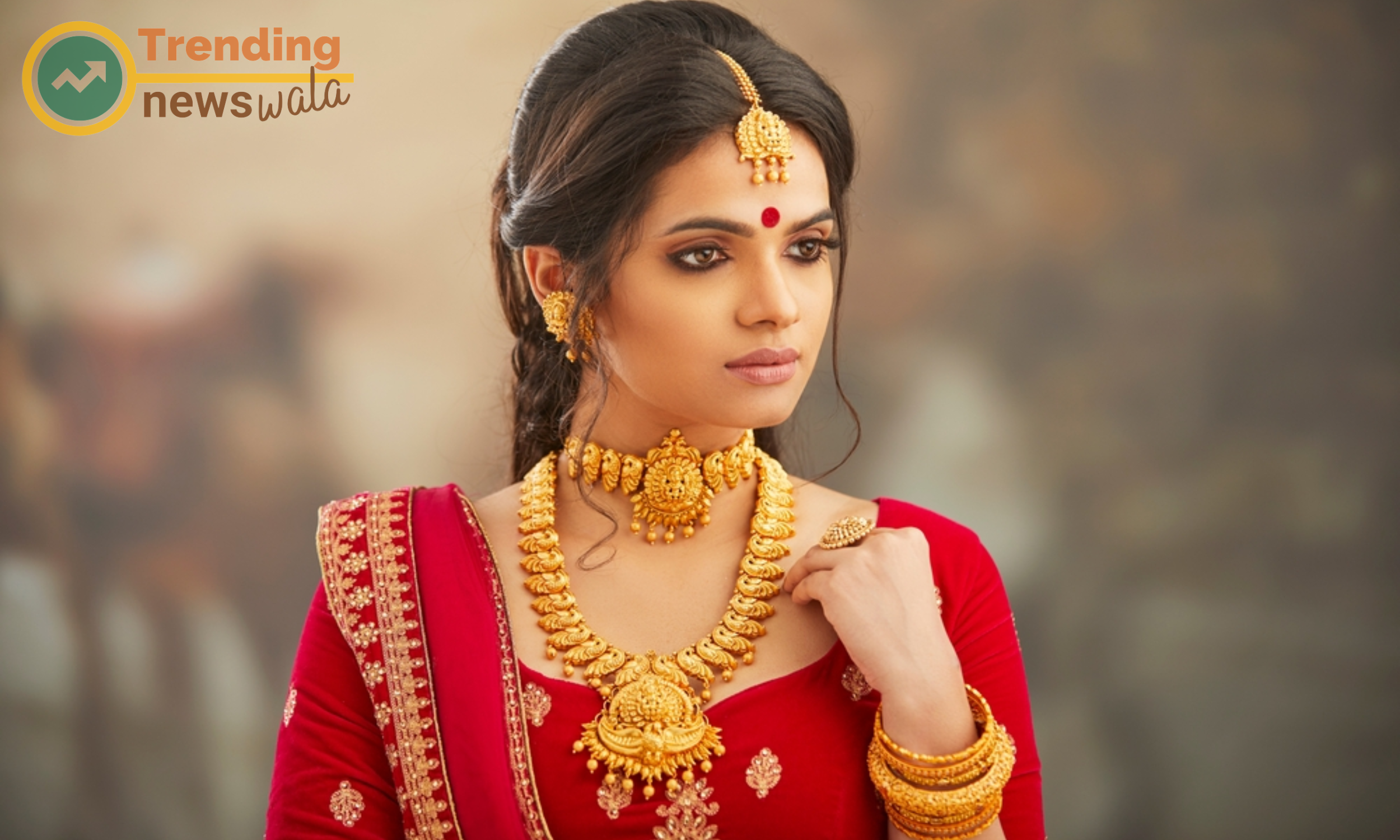
In many Indian cultures, jewelry is seen as a symbol of prosperity and wealth. Families often invest in gold and precious stones as a form of financial security. The amount and quality of jewelry a woman wears can be indicative of her family's affluence.
The symbol of prosperity is a representation of wealth, abundance, and success. Across various cultures and societies, certain symbols are associated with prosperity, and their presence is often believed to attract positive energies related to financial well-being. Here are more details on the symbol of prosperity:
Material Wealth: The most straightforward interpretation of the symbol of prosperity is its association with material wealth. This can include money, valuable assets, and financial success. Symbols representing affluence are often used to inspire and attract financial prosperity.
Lucky Charms and Symbols: Many cultures have specific symbols believed to bring good luck and prosperity. Examples include the four-leaf clover, horseshoe, Chinese coins, and the lucky cat in Asian cultures. These symbols are often used in homes or businesses to attract positive financial outcomes.
Feng Shui and Prosperity Symbols: Feng Shui, an ancient Chinese practice, emphasizes the arrangement of objects to create harmonious energy flow. Certain symbols, such as the wealth vase, money frog (Chan Chu), and prosperity coins, are strategically placed to enhance prosperity and abundance.
Color Symbolism: Colors are often used symbolically to represent prosperity. Gold, for instance, is associated with wealth and abundance in many cultures. The use of gold in clothing, accessories, or decorations signifies prosperity and financial success.
Plant and Nature Symbols: In various cultures, certain plants and natural elements are considered symbols of prosperity. The bamboo plant, for example, is associated with good luck and financial success in Feng Shui. Similarly, the cornucopia, or horn of plenty, in Western culture symbolizes abundance and prosperity.
Animal Symbols: Animals are sometimes regarded as symbols of prosperity. The elephant, especially with its trunk raised, is considered a symbol of good luck and financial success in many cultures. In Chinese culture, the dragon is also associated with prosperity.
Coins and Currency Symbols: Coins and currency symbols themselves are powerful representations of prosperity. Displaying coins, especially those with auspicious symbols, is a common practice to attract wealth. In Chinese culture, the characters for wealth and prosperity are often featured on decorations.
Jewelry and Gemstones: Certain gemstones and jewelry are believed to attract prosperity. For example, wearing or displaying jewelry featuring gemstones like jade, citrine, or peridot is thought to bring financial abundance. In addition, items like gold jewelry are often associated with prosperity.
Mandala and Sacred Geometry: Mandala patterns and sacred geometry are used symbolically to attract positive energies, including prosperity. Circular designs and intricate patterns are believed to create a harmonious and abundant energy flow.
Art and Imagery: Artwork and imagery that depict scenes of abundance, wealth, and prosperity are considered symbolic attractors of these energies. Paintings or sculptures representing opulence and success are often displayed in homes and businesses.
Cultural Variations: The symbols of prosperity can vary across cultures and regions. While some symbols are universally recognized, others may have specific cultural meanings. Understanding these cultural nuances enhances the effectiveness of using such symbols.
Positive Mindset: Beyond physical symbols, adopting a positive mindset and cultivating gratitude are also considered powerful symbols of prosperity. The belief in one's ability to attract and create wealth through positive thoughts and actions is a widely embraced concept.
Understanding and incorporating symbols of prosperity into one's life can be a personal or cultural practice, aimed at creating an environment that fosters financial well-being and abundance. Whether in the form of traditional symbols, personal affirmations, or cultural practices, the symbol of prosperity is a universal aspiration for many.
Traditional Attire Completeness
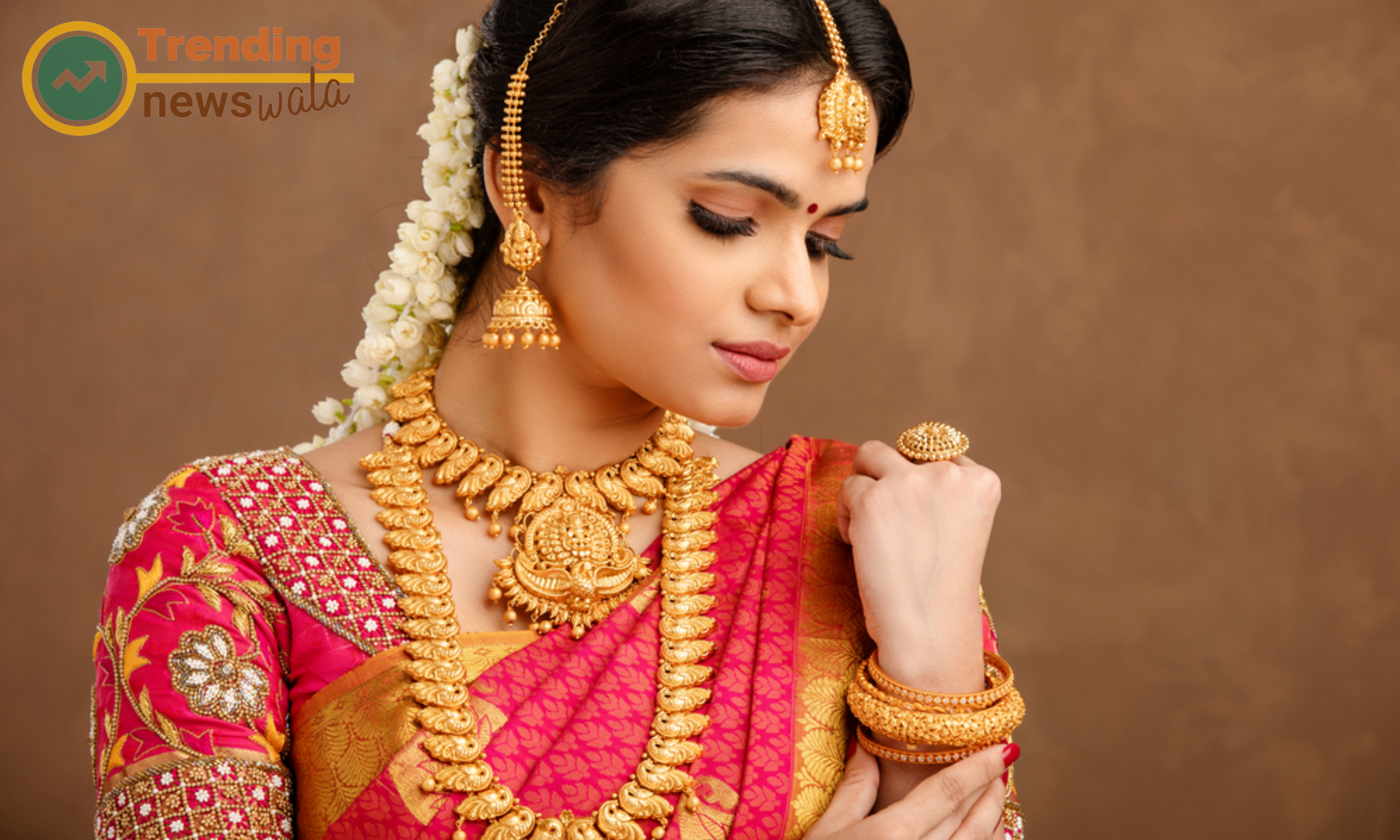
Traditional Indian attire, such as sarees and lehengas, is often complemented by a variety of jewelry pieces. The combination of colorful fabrics and intricate jewelry enhances the overall aesthetic, contributing to the uniqueness of Indian fashion.
Traditional attire completeness refers to the practice of wearing a full and coordinated ensemble of clothing, accessories, and adornments that together create a culturally rich and aesthetically pleasing look. This concept is particularly evident in various cultures around the world where traditional attire holds significant cultural, religious, or ceremonial value. Here are more details on traditional attire completeness:
Holistic Expression of Culture: Traditional attire completeness is a holistic expression of culture, often reflecting the heritage, customs, and identity of a particular community or region. It goes beyond individual garments and encompasses the entire ensemble, including accessories and embellishments.
Layers of Significance: Different elements of traditional attire hold specific cultural meanings. This may include the style of clothing, the choice of colors, patterns, embroidery, and the use of accessories such as jewelry, headpieces, and footwear. Each layer contributes to the overall significance of the attire.
Symbolism in Clothing Styles: The style of clothing itself is often symbolic. For example, the length, cut, and draping of a traditional garment may signify marital status, religious affiliation, or regional identity. The completeness of the attire ensures that these symbolic elements are appropriately represented.
Color Symbolism: Colors play a crucial role in traditional attire completeness. Specific colors may represent cultural symbols, religious beliefs, or social status. The careful selection and combination of colors contribute to the overall aesthetic and cultural significance of the attire.
Incorporation of Adornments: Adornments, including jewelry, belts, scarves, and headpieces, add layers of completeness to traditional attire. These embellishments are chosen thoughtfully to complement the clothing and convey additional cultural meanings.
Textile and Fabric Choices: The choice of textiles and fabrics is a key aspect of traditional attire. Different regions may have distinct weaving techniques, materials, and patterns. The completeness of traditional attire ensures that these textile choices are integrated harmoniously.
Ceremonial and Occasional Completeness: Traditional attire completeness is often emphasized during ceremonies, festivals, weddings, and other special occasions. These moments demand meticulous attention to detail, with individuals adorning themselves in the complete traditional ensemble to honor the significance of the event.
Regional Diversity: The concept of traditional attire completeness varies across regions and communities. Each cultural group may have its own set of rules and traditions regarding how the attire should be worn, accessorized, and presented. The diversity adds to the richness of global traditional clothing practices.
Maintenance of Heritage: Traditional attire completeness is a means of preserving and showcasing cultural heritage. It ensures that the traditional clothing customs are passed down through generations, maintaining a connection to ancestral practices and identities.
Modern Interpretations: In contemporary times, individuals may incorporate modern elements into traditional attire while maintaining completeness. This fusion allows for personal expression while respecting cultural traditions.
Photographic and Visual Impact: Traditional attire completeness often results in visually stunning and impactful ensembles. This aesthetic appeal is captured in photographs, art, and cultural representations, contributing to the visual legacy of a community.
Identity and Pride: Wearing traditional attire in its completeness is an expression of identity and cultural pride. It signifies a conscious choice to celebrate and honor one's heritage, fostering a sense of belonging and connection to a broader cultural community.
Traditional attire completeness, with its attention to detail and cultural symbolism, represents more than just clothing; it is a form of cultural storytelling that transcends generations, preserving the beauty and significance of diverse cultural identities.
Rituals and Celebrations

Jewelry plays a pivotal role in various rituals and celebrations, including weddings and religious ceremonies. Ornate pieces are passed down as heirlooms and worn during significant life events, symbolizing continuity, tradition, and familial bonds.
Rituals and celebrations are integral components of human societies, playing a crucial role in expressing cultural, religious, and social identities. These practices often involve symbolic actions, ceremonies, and communal gatherings, fostering a sense of belonging and shared experience. Here are more details on rituals and celebrations:
Cultural Expressions: Rituals and celebrations are powerful cultural expressions that convey the values, beliefs, and traditions of a community. They serve as a means of passing down cultural heritage from one generation to the next.
Marking Milestones: These practices are often associated with significant life events, marking milestones such as births, weddings, coming-of-age ceremonies, and funerals. Rituals provide a structured way to acknowledge and navigate life transitions.
Religious Significance: Many rituals and celebrations have religious roots, serving as expressions of faith, devotion, and spirituality. Religious ceremonies often involve specific rituals that connect individuals to their faith and create a sense of divine connection.
Social Cohesion: Celebrations bring people together, fostering social cohesion and a sense of community. Whether it's a local festival, a national holiday, or a religious observance, these events provide opportunities for individuals to connect and strengthen social bonds.
Symbolic Actions: Rituals involve symbolic actions that carry deeper meanings. These symbols may include gestures, objects, colors, or specific words that represent cultural or religious concepts. Symbolism adds layers of meaning to the rituals.
Ceremonial Practices: Ceremonial practices, including specific gestures, chants, prayers, or rituals involving sacred objects, contribute to the formality and sacredness of celebrations. These practices create a structured and meaningful framework for the event.
Seasonal and Harvest Celebrations: Many cultures celebrate seasonal changes and harvests through rituals and festivals. These events are often linked to agricultural practices, expressing gratitude for nature's bounty and marking the cyclical patterns of life.
Community Traditions: Rituals and celebrations often become embedded in community traditions. These practices define the identity of a group and create a sense of continuity and shared history among community members.
Ceremonial Attire: Participants in rituals and celebrations often wear special ceremonial attire. These outfits may be rich in symbolism and traditional elements, further enhancing the visual and cultural impact of the event.
Festive Foods: Special foods and feasts are frequently associated with celebrations. These culinary traditions contribute to the sensory experience of the event, creating a connection between food, culture, and celebration.
Rhythms and Music: Music and rhythmic elements are integral to many rituals and celebrations. Traditional music, dance, and chants enhance the emotional and communal aspects of the event, creating a vibrant and lively atmosphere.
Transitioning and Healing: Rituals often serve as mechanisms for transitioning from one state to another or for healing. Whether it's a marriage ceremony uniting two individuals or a funeral ritual providing closure, these practices help individuals navigate change and loss.
Global Diversity: The nature and form of rituals and celebrations vary widely across cultures and regions. From colorful and lively festivals to solemn religious ceremonies, the diversity reflects the richness of global cultural practices.
Cultural Preservation: Participating in rituals and celebrations helps preserve cultural traditions. As people engage in these practices, they contribute to the continuation of cultural heritage, ensuring that traditions are passed down through generations.
Personal and Collective Memory: Rituals and celebrations create lasting memories for individuals and communities. These shared experiences become part of personal and collective memory, shaping the narrative of a community's history.
Rituals and celebrations serve as important threads in the fabric of human experience, weaving together cultural, social, and spiritual dimensions. Whether grand or intimate, these practices contribute to the richness and diversity of global cultures, providing avenues for connection, reflection, and shared joy.
Expressions of Identity
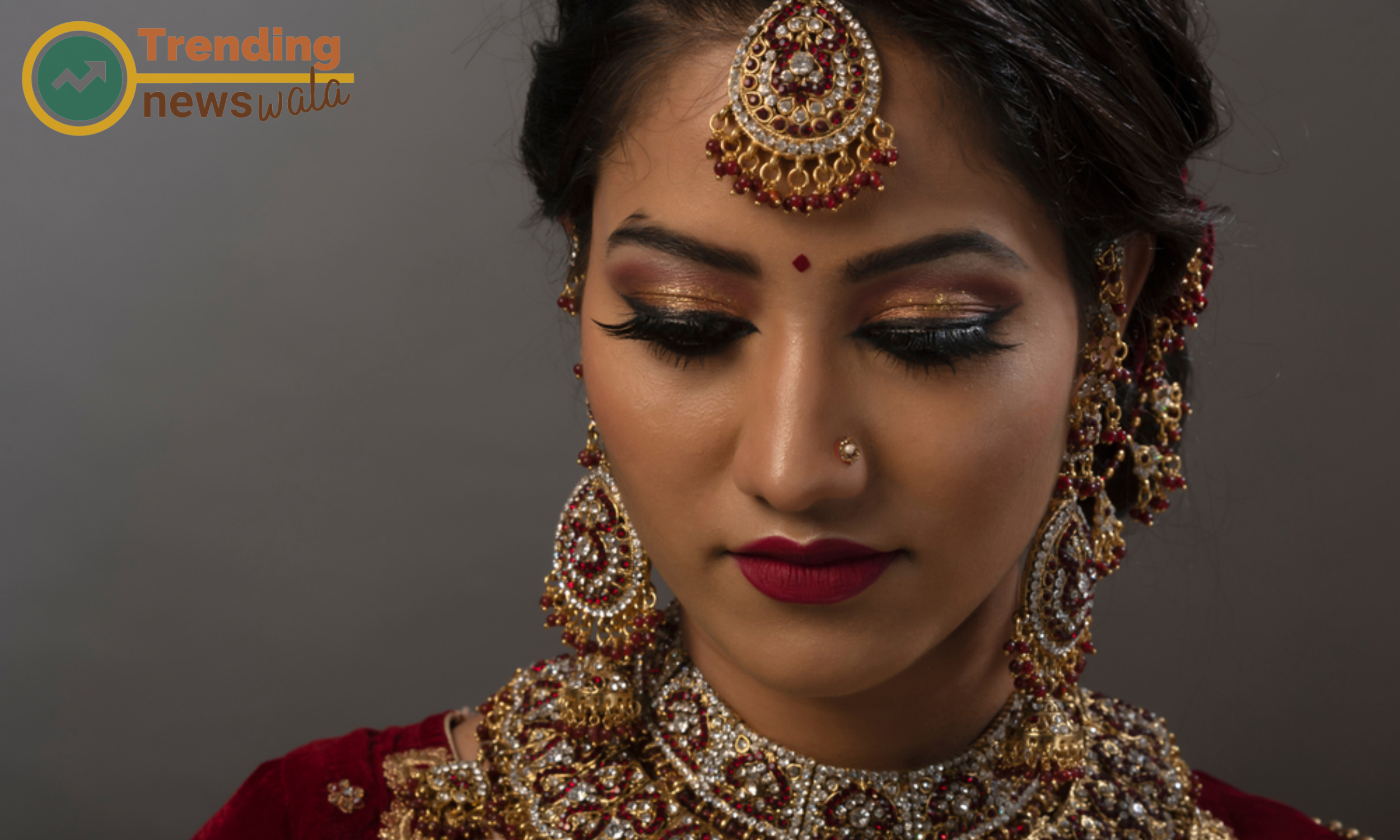
Different communities and regions in India have distinct styles of jewelry that serve as markers of identity. The specific designs, materials, and motifs chosen can reveal a woman's cultural and regional background, making jewelry a powerful expression of identity.
Expressions of identity encompass the various ways individuals communicate, represent, and affirm their sense of self within societal, cultural, and personal contexts. These expressions are multifaceted and can be manifested through various means. Here are more details on expressions of identity:
Personal Appearance: The way individuals choose to present themselves physically, including clothing, hairstyles, and body modifications, is a powerful expression of identity. Personal appearance often reflects cultural affiliations, personal preferences, and a sense of belonging.
Cultural and Ethnic Affiliations: Expressions of identity frequently involve affiliations with specific cultures, ethnicities, or subcultures. This may be evident in language use, cultural practices, and the incorporation of traditional clothing or symbols into daily life.
Language and Communication Styles: Language is a significant aspect of identity expression. The choice of language, dialects, accents, and communication styles can reflect cultural background, regional affiliations, and social identity.
Beliefs and Values: Expressing one's beliefs and values is a fundamental aspect of identity. This includes religious affiliations, political ideologies, moral principles, and philosophical perspectives that contribute to an individual's worldview.
Artistic and Creative Expression: Artistic endeavors, including visual arts, literature, music, and performance, serve as powerful outlets for expressing identity. Artists often draw on personal experiences, cultural backgrounds, and social contexts to create meaningful and authentic works.
Hobbies and Interests: Personal interests, hobbies, and recreational activities are reflective of individual identity. Whether it's a passion for sports, music genres, literature, or other pursuits, these choices contribute to a person's unique identity.
Social Media Presence: In the digital age, social media platforms provide individuals with opportunities to express and curate their identities. Through profile pictures, posts, and shared content, people convey aspects of their personalities, interests, and social connections.
Gender Identity and Expression: Gender identity and expression are critical components of personal identity. Individuals may express their gender identity through clothing, pronoun use, and other aspects of personal presentation, challenging traditional gender norms.
Occupational and Professional Identity: The choice of occupation and professional pursuits is often tied to identity. Career choices, professional achievements, and the cultivation of expertise contribute to an individual's sense of self.
Family and Relationship Dynamics: Family roles, relationships, and dynamics are integral to identity expression. The roles of parent, sibling, spouse, or child contribute to the multifaceted nature of personal identity.
Travel and Cultural Exposure: Exposure to different cultures through travel, migration, or cross-cultural experiences can shape identity. Individuals may integrate aspects of diverse cultures into their identity, creating a nuanced and enriched sense of self.
Educational Background: Educational experiences and academic pursuits contribute to identity formation. The pursuit of knowledge, academic achievements, and intellectual interests all play a role in shaping an individual's identity.
Self-Expression through Fashion: Fashion choices are a visual expression of personal identity. Clothing styles, accessories, and overall fashion preferences can communicate aspects of an individual's personality, taste, and cultural influences.
Community Involvement: Engaging in community activities, social causes, or advocacy work is a way to express identity within a broader context. Participation in community initiatives reflects personal values and a commitment to social change.
Resistance and Activism: Some individuals express their identity through resistance to social norms or systemic injustices. Activism and advocacy for social change become integral aspects of their identity, reflecting a commitment to a particular cause.
Expressions of identity are dynamic and fluid, evolving over time as individuals navigate different life experiences and contexts. This complexity adds depth and richness to the tapestry of human identity, highlighting the diverse ways people define and express who they are.
Protection and Spiritual Significance
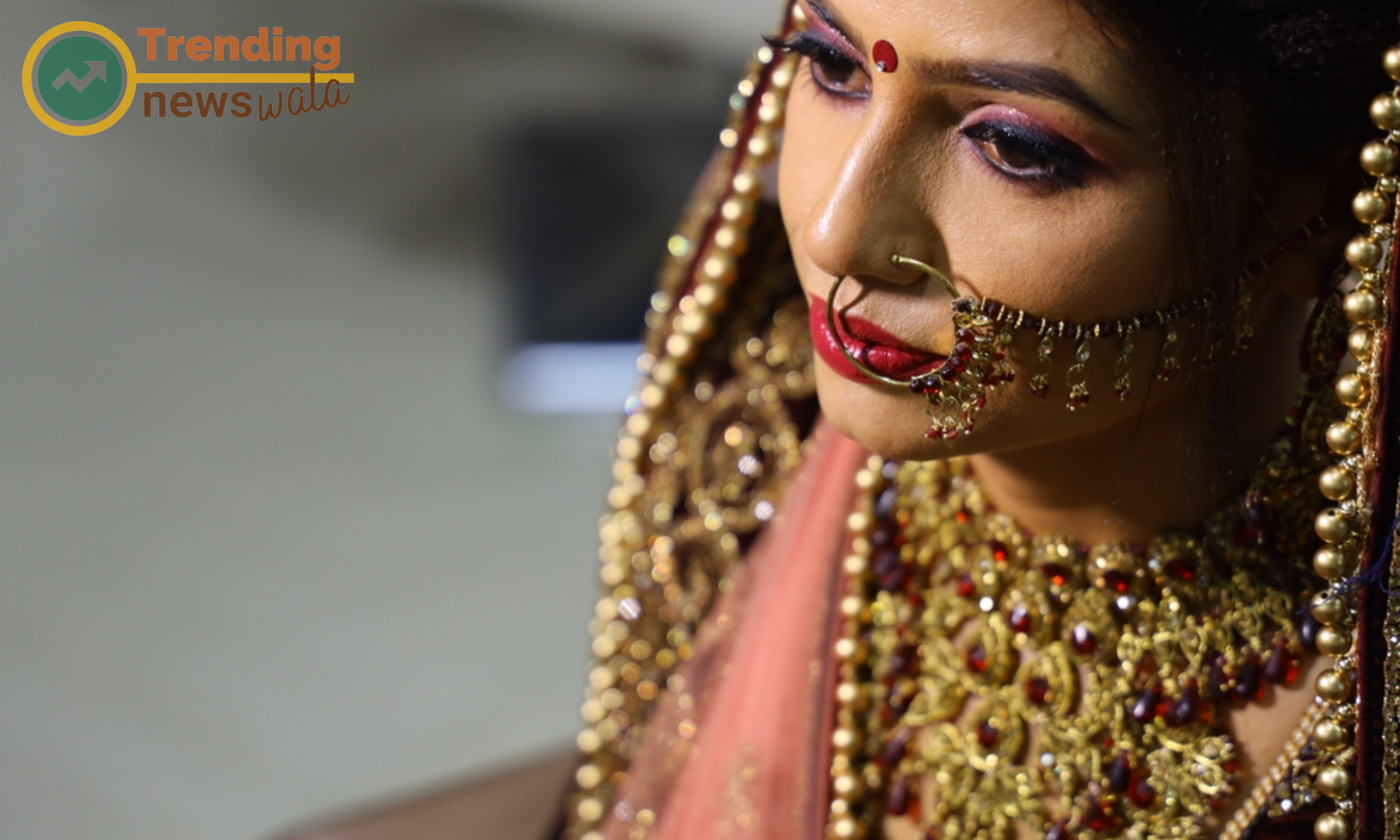
Many Indian women believe that certain metals and gemstones possess protective and spiritual qualities. Wearing jewelry embedded with specific stones is believed to bring good luck, ward off evil, and enhance spiritual well-being.
Protection and spiritual significance are intertwined concepts often associated with symbols, objects, and practices that are believed to offer spiritual safeguarding or a connection to higher realms. Here are more details on protection and spiritual significance:
Amulets and Talismans: Amulets and talismans are objects believed to have protective qualities. They can take various forms, such as charms, pendants, or engraved stones. Different cultures and religions have specific amulets associated with warding off evil, providing luck, or promoting spiritual well-being.
Religious Symbols: Symbols within religious traditions often hold protective and spiritual significance. For example, the Christian cross, the Jewish Star of David, the Islamic Evil Eye, and the Hindu Om symbol are considered powerful symbols that carry spiritual meaning and may offer protection.
Prayer and Mantras: The recitation of prayers, mantras, or sacred verses is a common practice across various spiritual traditions. These repetitive utterances are believed to have protective qualities, fostering a sense of connection with the divine and invoking spiritual guidance.
Sacred Texts and Scriptures: Sacred texts and scriptures play a significant role in spiritual practices. Reading, reciting, or meditating on passages from these texts is often considered a source of protection and spiritual guidance.
Rituals and Ceremonies: Rituals and ceremonies within religious or spiritual contexts are performed for various reasons, including protection. These rituals may involve purification, blessing, or specific actions believed to create a shield against negative energies.
Holy Water and Anointing: Holy water, oils, or substances consecrated by religious authorities are used in many traditions for protective purposes. Anointing oneself or others with these sacred substances is thought to create a spiritual shield.
Crystals and Gemstones: Certain crystals and gemstones are believed to have protective and spiritual properties. For example, black tourmaline is thought to absorb negative energy, while amethyst is associated with spiritual growth and protection.
Yantras and Mandala Art: Yantras and mandalas are geometric designs with spiritual significance. They are used in Hindu, Buddhist, and other traditions as meditation aids and tools for spiritual protection. These intricate patterns are believed to represent cosmic energy and divine presence.
Ceremonial Tools: Ceremonial tools, such as incense, candles, and ritualistic objects, are often used in spiritual practices for protection and purification. The smoke from burning incense, for instance, is thought to cleanse and purify the surroundings.
Guiding Spirits and Deities: Many spiritual traditions involve the belief in guiding spirits, guardian angels, or deities who offer protection. Individuals may invoke these spiritual beings through prayers or rituals for guidance and safeguarding.
Meditation and Mindfulness: Spiritual practices like meditation and mindfulness are not only means of connecting with higher consciousness but are also considered protective. These practices help individuals develop inner strength, resilience, and a sense of peace.
Energy Healing and Reiki: Energy healing modalities, such as Reiki, focus on channeling positive energy to promote healing and protection. Practitioners believe that balancing and clearing energy fields contribute to spiritual well-being.
Astrological and Numerological Protection: Astrology and numerology are fields that assign spiritual significance to celestial bodies and numbers. Personalized charts or readings are often used to determine auspicious dates, times, or symbols for protection.
Cleansing and Purification: Cleansing rituals, such as smudging with sage or using purifying baths, are believed to remove negative energies and provide spiritual protection. These practices are common in various indigenous and spiritual traditions.
Dream Interpretation: In some cultures, dreams are considered portals to the spiritual realm. Dream interpretation and rituals based on dream insights may be practiced for guidance, warning, or protection.
Protection and spiritual significance are deeply rooted in the beliefs and practices of various cultures and spiritual traditions. Individuals often incorporate these elements into their lives as a means of seeking guidance, finding solace, and creating a sense of spiritual well-being.
Social Status and Marriage Symbolism
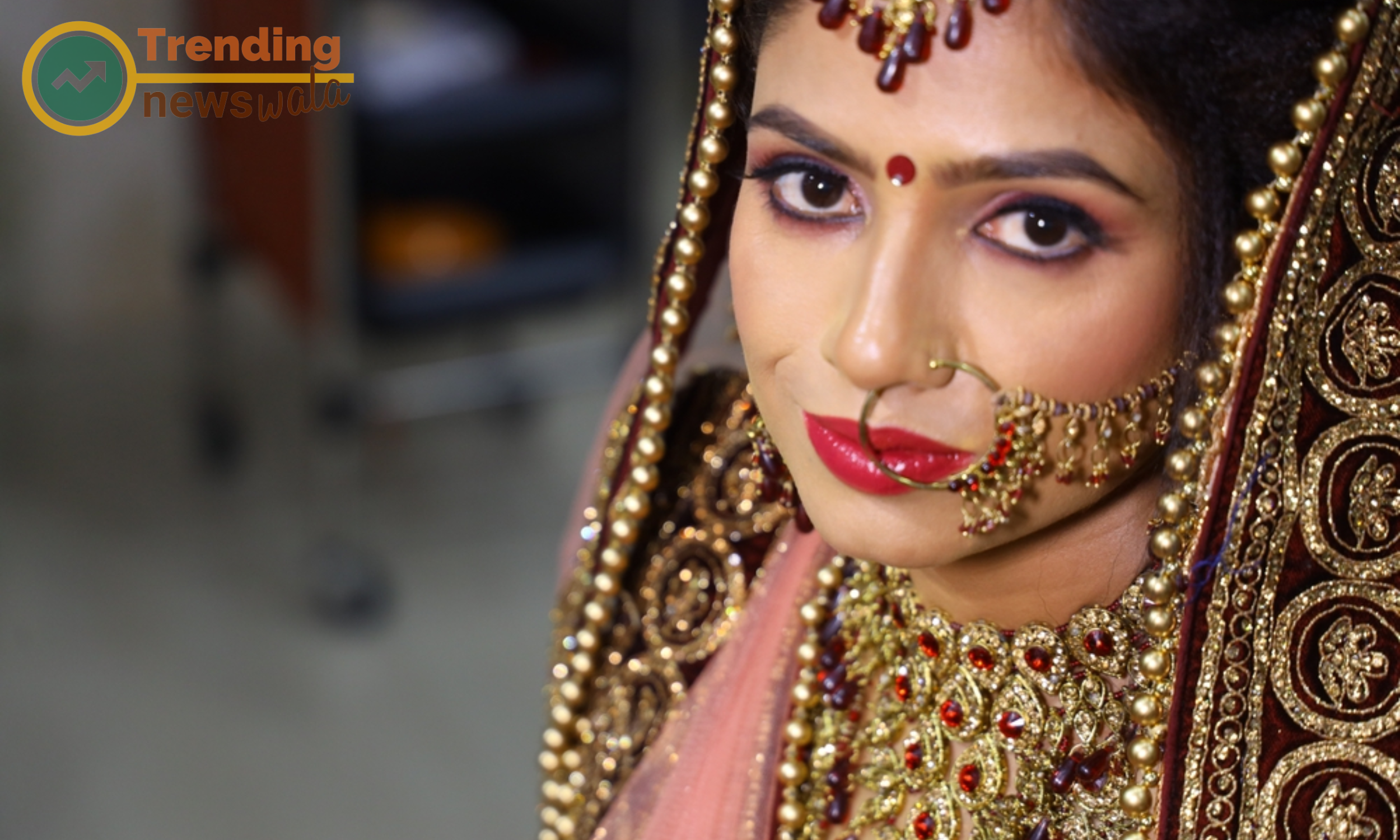
Married women often wear specific jewelry items, such as mangalsutras (a symbol of marital status) and toe rings, signifying their commitment. The presence and quality of these pieces are associated with a woman's social status and marital life.
Social status and marriage symbolism are intertwined concepts that play a significant role in various cultures, influencing societal norms, traditions, and individual identities. Here are more details on social status and marriage symbolism:
Marriage as a Social Institution: Marriage is often regarded as a social institution that not only signifies the union of two individuals but also establishes social ties between families and communities. The way marriages are conducted can reflect and reinforce existing social structures.
Arranged Marriages: In many cultures, arranged marriages have been historically prevalent. These marriages are often influenced by considerations of social status, caste, class, and family reputation. Arranged marriages are seen as a way to maintain social harmony and economic stability.
Social Hierarchy and Class Distinctions: Marriage can be a means of perpetuating or challenging social hierarchies and class distinctions. Matches between individuals of similar social status are often preferred to maintain or enhance family standing.
Economic Alliances: Marriages have been used historically to forge economic alliances between families. This can involve the exchange of dowries, gifts, or other forms of financial arrangements, contributing to the social and economic standing of both families involved.
Symbols of Wealth and Prosperity: Wedding ceremonies, attire, and rituals often serve as symbols of wealth and prosperity. The grandeur of a wedding can be a reflection of the families' social status and financial standing, showcasing their ability to host elaborate celebrations.
Ceremonial Attire: The attire worn during wedding ceremonies often carries symbolic significance. Traditional garments, jewelry, and accessories may be chosen not only for aesthetic reasons but also to reflect cultural identity, family traditions, and social standing.
Marriage Traditions and Customs: Specific marriage traditions and customs vary widely across cultures but often hold symbolic meaning related to social status. For example, the exchange of rings, the tying of knots, or other rituals may symbolize unity, commitment, and the joining of two families.
Inheritance and Succession: Marriages can have implications for inheritance and succession. The choice of a spouse may impact the passing down of property, titles, or family businesses, influencing the social standing of future generations.
Social Expectations and Norms: Societal expectations and norms surrounding marriage can influence individuals' choices. Meeting certain criteria, such as marrying within a particular social group or adhering to cultural norms, can contribute to social acceptance and approval.
Community Recognition: Marriage often brings community recognition and acceptance. In some cultures, a successful and socially recognized marriage is considered an essential milestone in an individual's life, contributing to their status within the community.
Joint Families vs. Nuclear Families: The structure of the family unit chosen after marriage can also influence social status. In cultures where joint families are common, the integration of two families through marriage can strengthen social bonds and contribute to a sense of collective social identity.
Modern Influences: While traditional values play a role, modern influences, such as education, career, and individual aspirations, increasingly impact marriage choices. Individuals may prioritize compatibility, shared values, and personal happiness over strict adherence to social status considerations.
Changing Gender Roles: Evolving attitudes toward gender roles also influence marriage symbolism. Women's empowerment, education, and professional achievements may impact how marriages are perceived in terms of equality and shared responsibilities.
Interfaith and Inter-caste Marriages: Marriages across religious or caste boundaries can challenge traditional social structures and contribute to social change. Such unions may face resistance but can also symbolize inclusivity and a breaking down of social barriers.
Social Media and Public Display: The advent of social media has added a new dimension to marriage symbolism. Publicly sharing wedding events and marital status on platforms like Instagram and Facebook can contribute to the perception of a couple's social status.
In many societies, the symbolism associated with marriage and social status is deeply ingrained in cultural practices and traditions. While some aspects remain traditional, changing social dynamics, increased individual autonomy, and evolving values contribute to a more diverse and dynamic landscape of marriage symbolism.
Customs and Traditions
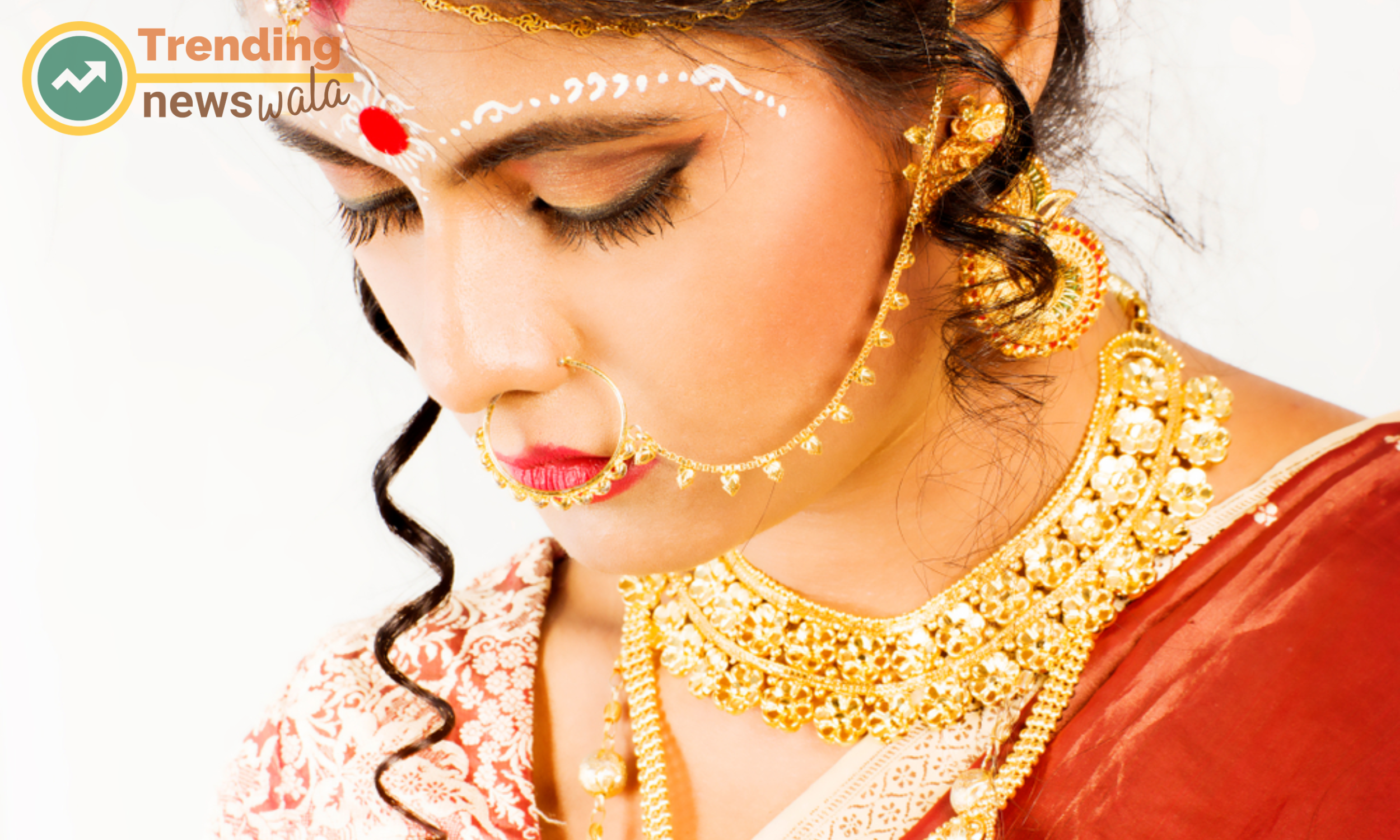
Jewelry is deeply ingrained in various customs and traditions. From nose rings in some cultures to the elaborate headpieces worn during certain festivals, the customs associated with jewelry contribute to the tapestry of Indian rituals.
Customs and traditions are integral components of cultural identity, shaping the way societies express values, beliefs, and shared practices. These customs are often passed down from generation to generation, contributing to the richness and diversity of global cultures. Here are more details on customs and traditions:
Definition of Customs: Customs refer to established practices, behaviors, and rituals that are widely accepted and followed within a particular society. They form part of the cultural fabric and are often handed down through generations.
Definition of Traditions: Traditions encompass a broader set of customs, rituals, and practices that are inherited and passed down within a community or family. Traditions often include ceremonies, celebrations, and symbolic activities that hold significance for a group of people.
Cultural Identity: Customs and traditions play a crucial role in shaping and expressing cultural identity. They serve as markers that distinguish one community or group from another, fostering a sense of belonging and shared heritage.
Rites of Passage: Many customs and traditions are associated with significant life events, such as birth, coming of age, marriage, and death. These rites of passage often involve specific rituals and ceremonies that mark transitions from one life stage to another.
Religious Customs: Religious customs and traditions are deeply ingrained in many cultures. These may include rituals, prayers, festivals, and pilgrimages that adhere to the teachings and beliefs of a particular faith.
Ceremonies and Celebrations: Ceremonies and celebrations are often rooted in customs and traditions. These events bring communities together, providing opportunities for shared joy, reflection, and the reinforcement of cultural values.
Festivals and Holidays: Festivals and holidays are recurring customs that are often marked by specific rituals, activities, and cultural performances. These celebrations often have religious, historical, or seasonal significance.
Ceremonial Attire: The clothing worn during specific customs and traditions is often distinctive and may have symbolic meanings. Ceremonial attire is chosen to reflect the significance of the occasion and is often passed down through generations.
Food Customs: Food is a central aspect of many customs and traditions. Special dishes, recipes, and culinary practices are often associated with specific celebrations and rituals, contributing to the sensory experience of cultural events.
Language and Communication Customs: Language is a carrier of cultural customs, including specific phrases, greetings, and expressions that are unique to a community. Language customs contribute to the linguistic identity of a group.
Artistic and Creative Traditions: Creative expressions, such as dance, music, storytelling, and visual arts, are often intertwined with customs and traditions. These artistic forms contribute to cultural preservation and expression.
Wedding Customs: Wedding customs vary widely across cultures and often involve a series of rituals, ceremonies, and symbolic gestures. These customs may include engagement ceremonies, religious rituals, and specific traditions associated with the exchange of vows.
Funeral and Mourning Traditions: Customs related to death and mourning are significant aspects of cultural practices. Funeral rites, mourning periods, and commemorative ceremonies are conducted to honor the deceased and provide solace to the bereaved.
Taboos and Superstitions: Cultural customs may include taboos and superstitions that guide behavior and practices. These beliefs often stem from cultural myths, historical events, or religious teachings.
Cultural Heritage: Customs and traditions collectively contribute to the cultural heritage of a community. Preserving and passing down these practices is vital for maintaining cultural continuity and identity.
Adaptation and Evolution: Customs and traditions are not static; they can adapt and evolve over time. While some elements remain unchanged, cultural practices may undergo transformations influenced by social, technological, or global factors.
Intergenerational Transmission: Customs and traditions are often transmitted from older generations to younger ones through oral history, demonstrations, and direct participation in cultural events. This transmission ensures the continuity of cultural practices.
Globalization's Impact: Globalization has led to the exchange and blending of customs and traditions across cultures. While this enriches cultural diversity, it also raises questions about the preservation of unique cultural practices in the face of external influences.
Understanding customs and traditions provides insights into the values, beliefs, and social dynamics of different societies. They serve as essential threads that weave together the intricate tapestry of human culture, fostering a sense of continuity, identity, and shared experiences.
Craftsmanship and Artistry
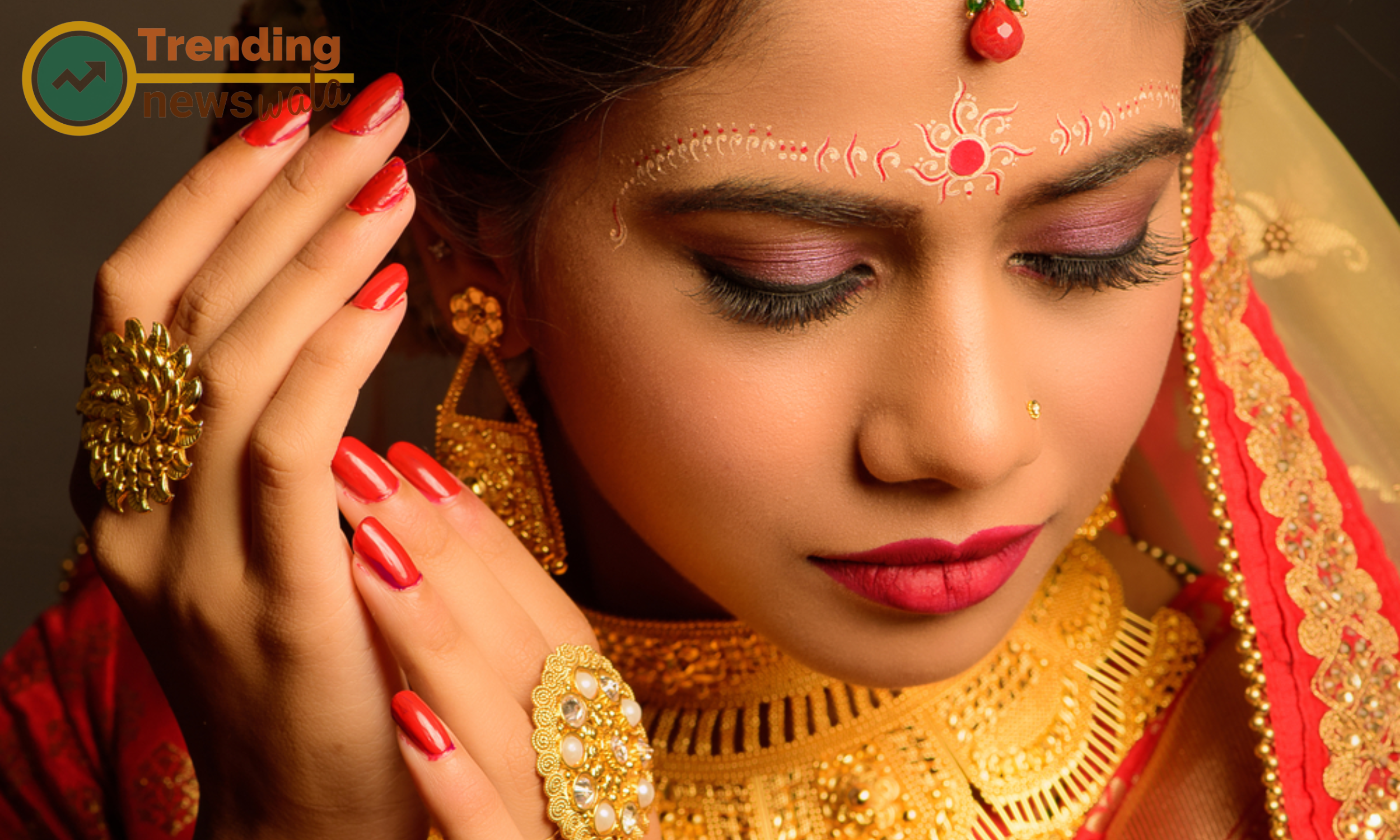
India has a rich history of jewelry craftsmanship, with artisans showcasing intricate designs and exceptional skills. The appreciation for fine craftsmanship and the value placed on handmade jewelry contribute to the cultural significance of adorning oneself with these pieces.
Craftsmanship and artistry are expressions of skill, creativity, and dedication to producing objects or works of art that showcase precision, aesthetic appeal, and a deep understanding of materials and techniques. These elements are often associated with various forms of traditional and contemporary craftsmanship. Here are more details on craftsmanship and artistry:
Definition of Craftsmanship: Craftsmanship refers to the quality of design and execution in the creation of a product or work of art. It involves skillful workmanship, attention to detail, and a commitment to producing high-quality, often handmade, items.
Definition of Artistry: Artistry involves the application of creative skill and imagination in the production of works of art. It goes beyond technical proficiency, encompassing the ability to convey emotions, ideas, and aesthetics through the chosen medium.
Handcrafted vs. Mass Production: Craftsmanship is often associated with handcrafted items, where skilled artisans create products with meticulous attention to detail. This stands in contrast to mass production, where items are manufactured in large quantities with less emphasis on individualized craftsmanship.
Skills and Techniques: Craftsmanship and artistry require a mastery of skills and techniques specific to the chosen craft or art form. This may include woodworking, metalworking, ceramics, painting, sculpture, and various other disciplines.
Use of Materials: The choice and treatment of materials are crucial aspects of craftsmanship and artistry. Skilled artisans understand the properties of different materials and employ them in a way that enhances the final product, whether it's the choice of wood in furniture making or the selection of pigments in painting.
Precision and Attention to Detail: Craftsmanship emphasizes precision and meticulous attention to detail. Every element, joint, or stroke is executed with care to ensure the overall quality and integrity of the final piece.
Artistic Expression: Artistry involves a high degree of artistic expression and creativity. Artists infuse their personal style, emotions, and unique vision into their work, creating pieces that are not only technically proficient but also carry a deeper meaning.
Innovation and Experimentation: Both craftsmanship and artistry can involve innovation and experimentation. Craftsmen and artists may push the boundaries of traditional techniques, introducing new methods, materials, or styles to create innovative and contemporary pieces.
Cultural and Traditional Influences: Craftsmanship often carries cultural and traditional influences. Many crafts have been passed down through generations, preserving cultural heritage and reflecting regional or historical aesthetics.
Functional and Decorative Art: Craftsmanship is often associated with functional items such as furniture, pottery, or textiles, while artistry can extend to both functional and purely decorative pieces. The distinction between functional and decorative art blurs in many craft and art forms.
Apprenticeship and Mentorship: Traditionally, the development of craftsmanship often involves apprenticeship or mentorship. Skilled craftsmen pass down their knowledge, techniques, and expertise to the next generation, ensuring the continuity of the craft.
Artistic Movements and Styles: Artistry is often influenced by artistic movements and styles that emerge over time. Artists may align themselves with or react against particular movements, contributing to the evolution and diversity of artistic expression.
Market Value and Collectibility: Craftsmanship and artistry can contribute to the market value and collectibility of items. Handcrafted pieces and works of art created by renowned artisans or artists may be highly sought after for their quality, uniqueness, and historical or cultural significance.
Contemporary Craft and Art: Contemporary craftsmanship and artistry often involve a fusion of traditional techniques with modern aesthetics. Artists and craftsmen may experiment with new materials, technologies, and concepts, contributing to the ever-evolving landscape of creative expression.
Recognition and Awards: Exceptional craftsmanship and artistry are often recognized through awards, honors, and exhibitions. These accolades acknowledge the skill, creativity, and impact of artisans and artists within their respective fields.
Craftsmanship and artistry, whether applied to traditional crafts or contemporary art forms, represent the human capacity for creativity, skill development, and the creation of objects that transcend mere functionality to become expressions of culture, identity, and beauty. The intersection of craftsmanship and artistry continues to shape and enrich the world of handmade and artistic creations.
Economic Importance
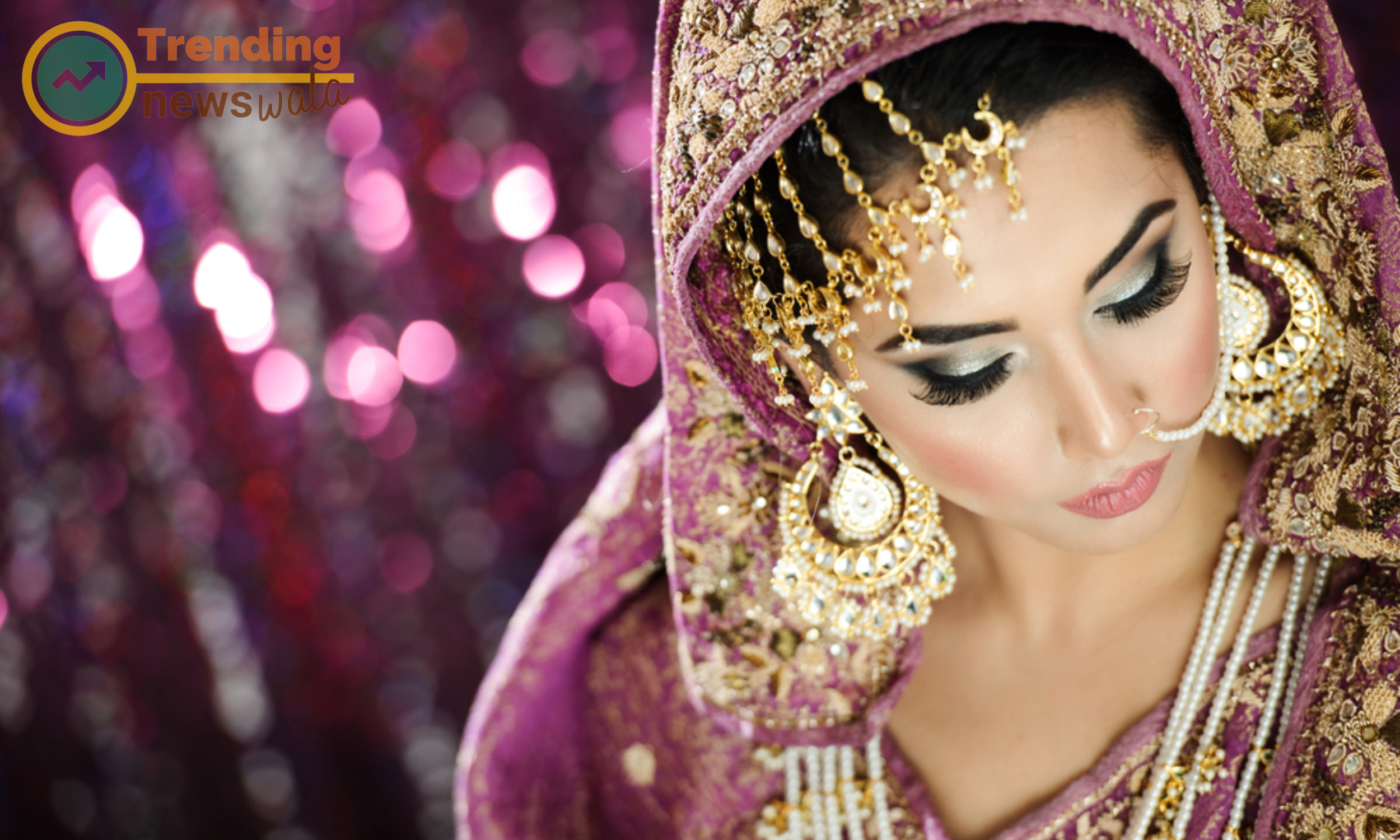
The jewelry industry is a significant economic force in India. The demand for traditional and contemporary designs creates employment opportunities for artisans and contributes to the country's economy.
The economic importance of craftsmanship and artistry is multifaceted, contributing to various sectors and playing a crucial role in local and global economies. Here are more details on the economic importance of craftsmanship and artistry:
Job Creation: Craftsmanship and artistry contribute significantly to job creation. Skilled artisans, craftsmen, and artists are employed across various sectors, including traditional crafts, visual arts, design, and creative industries.
Small and Medium Enterprises (SMEs): Many artisans operate as small or medium-sized enterprises, producing handmade and unique products. These businesses contribute to local economies by generating employment, supporting families, and fostering entrepreneurship.
Cultural Tourism: Craftsmanship and artistry are often integral to cultural tourism. Visitors are drawn to regions known for their traditional crafts and arts, contributing to the local economy through tourism-related activities such as purchases of handmade goods, art exhibitions, and cultural experiences.
Export and Trade: Handcrafted and artistic products are often exported, contributing to international trade. Countries with strong traditions in craftsmanship and artistry may find a market for their unique products globally, boosting the national economy.
Heritage Preservation: Traditional craftsmanship helps preserve cultural heritage. The economic value lies not only in the production of goods but also in the sustainable preservation of traditional knowledge and skills, which can be passed down through generations.
Art Market and Auctions: Fine art and high-quality craftsmanship often find a place in the art market and auction houses. The sale of paintings, sculptures, and rare handcrafted items contributes to a lucrative industry, attracting collectors and investors.
Creative Industries: Craftsmanship and artistry are key components of the creative industries, which encompass design, fashion, advertising, and other creative sectors. These industries contribute significantly to economic growth and innovation.
Luxury Markets: Handcrafted and artisanal products often occupy the luxury market. Consumers are willing to pay a premium for unique, high-quality items, contributing to the economic viability of luxury brands and supporting craftsmanship.
Art and Craft Education: Education in arts and crafts supports the development of future artisans, designers, and artists. This education sector contributes to economic development by nurturing talent, fostering creativity, and preparing individuals for careers in creative industries.
Innovation and Design Thinking: Craftsmanship and artistry encourage innovation and design thinking. These qualities are increasingly valued in various industries, including technology and manufacturing, leading to the development of innovative products and solutions.
Community Economic Development: Artisanal clusters and creative communities contribute to local economic development. The concentration of artisans and artists in specific regions can create economic synergies, attracting visitors, fostering collaboration, and supporting local businesses.
Collaboration with Industries: Craftsmanship and artistry often intersect with other industries. For example, collaborations between designers, artists, and manufacturing industries can result in the production of unique, marketable products.
Value Chains: Craftsmanship and artistry are part of complex value chains. From raw materials to the final product, multiple stages of production involve various economic actors, creating opportunities for employment and entrepreneurship.
Social Enterprises: Some artisanal and artistic ventures operate as social enterprises, combining economic goals with social and environmental objectives. These enterprises contribute to sustainable development and address social issues while generating economic value.
Sustainable Practices: Craftsmanship often aligns with sustainable practices. The economic importance lies in the promotion of environmentally friendly and ethically produced goods, meeting the demand for sustainable products in the market.
Creative Economy: Craftsmanship and artistry are integral components of the creative economy, which encompasses a wide range of creative and cultural activities. This sector contributes to economic growth, job creation, and innovation.
The economic impact of craftsmanship and artistry extends beyond the production of goods to encompass a broader creative ecosystem. Recognizing and supporting the economic contributions of artisans, craftsmen, and artists can lead to sustainable development, cultural preservation, and a thriving creative economy.

Why do Indian women wear so much jewelry?
Jewelry holds cultural and traditional significance in India. It is not just an adornment but also a reflection of a woman's marital status, wealth, and social standing. Additionally, jewelry is considered auspicious and is often associated with religious rituals and ceremonies.
What is the cultural significance of jewelry in India?
Jewelry in India is deeply ingrained in cultural practices. It symbolizes femininity, marital status, prosperity, and blessings. Different pieces of jewelry hold specific meanings, and the choice of jewelry often varies based on occasions, regions, and cultural beliefs.
Is there a specific reason behind wearing jewelry during weddings?
Yes, wearing jewelry during weddings is a cultural norm in India. It symbolizes the bride's wealth, social status, and marital commitment. Each piece of jewelry has its own significance and may be passed down through generations as family heirlooms.
What are the common types of jewelry worn by Indian women?
Common types of jewelry worn by Indian women include necklaces, earrings, bangles, rings, anklets, toe rings, nose rings, and maang tikka (headpiece). Each type of jewelry has cultural, religious, or regional significance.
Does the choice of jewelry vary across different regions in India?
Yes, the choice of jewelry can vary significantly across different regions in India. Each region has its own traditional styles and designs, influenced by local customs and cultural practices.
Is there a religious significance to wearing jewelry in India?
Yes, there is religious significance to wearing jewelry in India. Many Hindu rituals and ceremonies involve the use of specific jewelry pieces. For example, married women often wear mangalsutra, a necklace symbolizing marital bliss and commitment.
What is the importance of specific jewelry pieces like mangalsutra and toe rings?
Mangalsutra is a sacred necklace worn by married women, signifying the bond of marriage. Toe rings, known as "bichuas" or "metti," are worn for marital well-being and are considered auspicious in Hindu culture.
Do Indian women wear jewelry every day?
The frequency of wearing jewelry varies among individuals and is influenced by factors such as personal preferences, occasions, and cultural practices. While some women wear jewelry daily, others may reserve certain pieces for special events or religious ceremonies.
Is there a historical context to the tradition of wearing jewelry in India?
Yes, the tradition of wearing jewelry in India has a rich historical context. Different dynasties and rulers have influenced the evolution of jewelry styles, with intricate designs and craftsmanship passed down through generations.
Can men also wear traditional jewelry in India?
While men in India may wear certain types of jewelry like rings, bracelets, or earrings, the tradition of elaborate jewelry is more prominent among women. However, cultural practices vary, and some regions have specific jewelry traditions for men.



